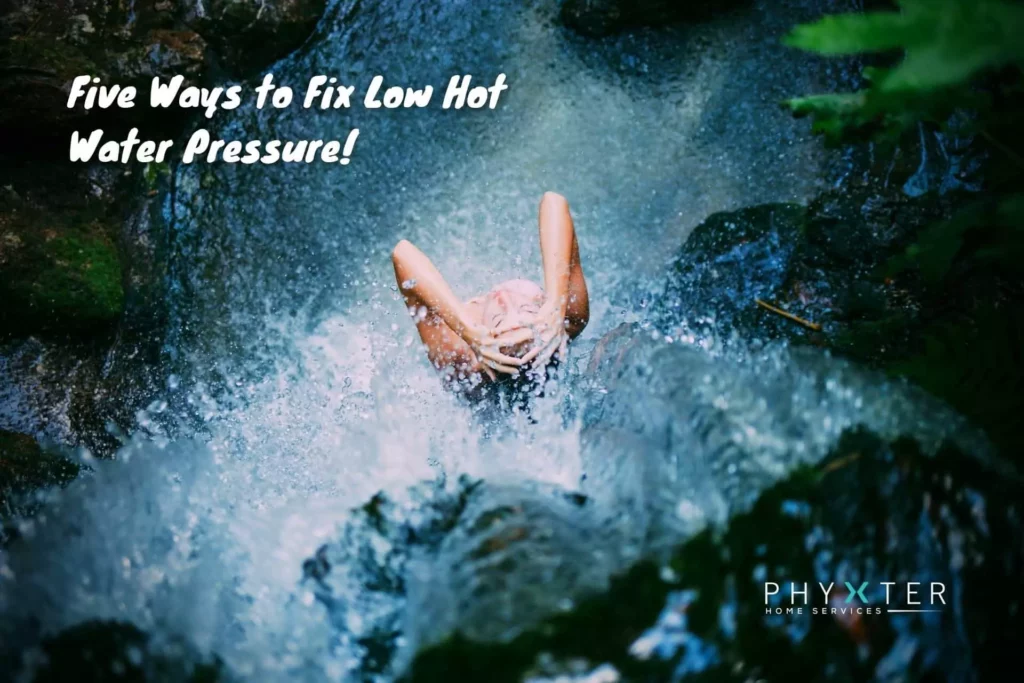Got No or Low Hot Water Pressure?
While many consider running hot water as a modern convenience, it is far from a modern marvel.
In the late 1800s, an inventor filed the patent for the first tank-type water heater. Since that time, engineers have made considerable improvements to the original model.
Today’s whole house indoor hot water heating systems are reliable and energy efficient. Even today’s improved water heating systems need regular maintenance and upkeep to maintain good water pressure.
Plumbers will perform routine inspections to check for signs of buildup, wear, broken pipes, and damaged water heating systems. Early detection prevents reduced pressure issues from becoming severe or costly.
A quality indoor water heating system lasts for many years when installed and maintained by a professional. Sometimes, the unexpected happens.
Sudden or unchecked damage to pipes, tanks, or other plumbing fixtures often results in low hot water pressure. Losing hot water pressure causes frustration but repairing the problem doesn’t have to add to the hassle.
At Phyxter, we work with trained utility and plumbing technicians to get you the solutions and repairs you need for your desired price. This blog lists common causes of low water pressure in the home or business.
Next, we offer our top five solutions to get your hot water running again fast.
Table of Contents
⭐ How to Detect the Cause of Low Hot Water Pressure in Your Home or Business
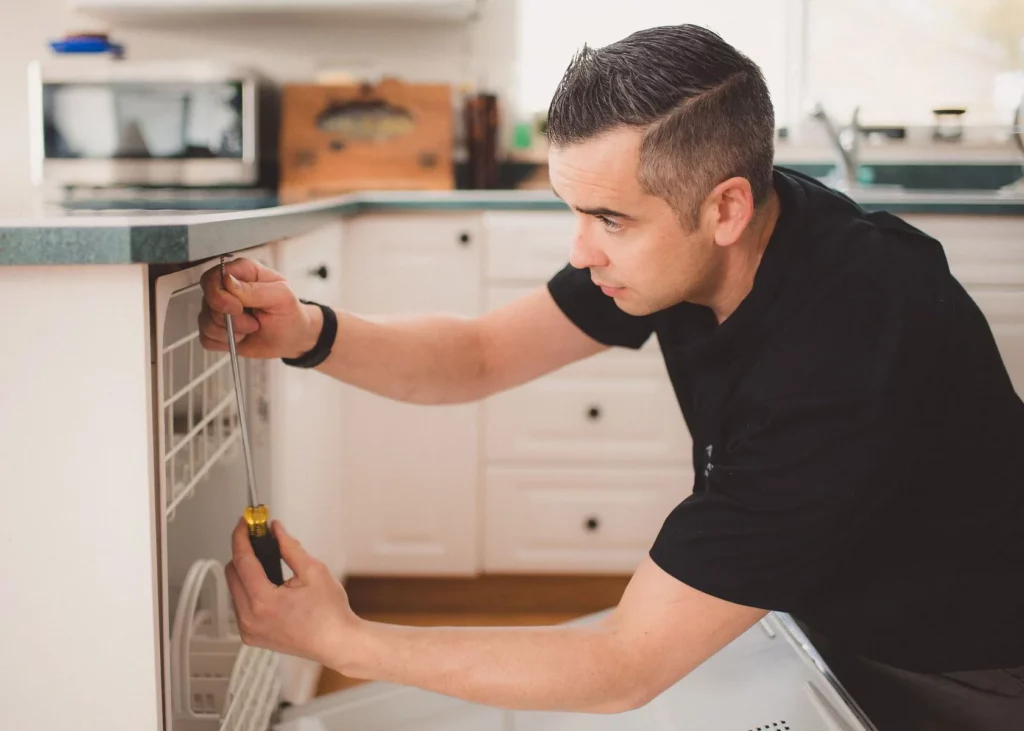
A successful, happy home or business requires adequate hot water pressure. When low hot water pressure unexpectedly occurs, take steps to identify the cause as soon as possible.
Quickly locating the source of low water pressure prevents further costs and damages.
Simple methods of finding the water pressure problem include:
- Determining if all shower heads, taps, or hot water faucets are affected
- Checking every shower, sink, and toilet for low pressure
- Checking for signs of damage to a shutoff valve
- Inspecting walls, washing machine, dishwasher and water heater locations for water leaks and damage
- Visually checking your water heater’s pilot light and pressure regulator
For the best advice on locating a plumbing problem related to low water pressure, contact a qualified expert or keep reading.
A problem such as a malfunctioning pressure regulator is best left to the experts.
⭐ Five Common Causes of Low Hot Water Pressure (And How to Fix Them)
To quickly and safely fix low hot water pressure, start at the source of the problem.
Problems with low water pressure typically begin in the water heater, copper pipes, or water main.
At Phyxter, we’ve pulled from the minds of plumbing experts to show you how to find and tackle the most common causes of low hot water pressure in your home or business.
Read on to get started and improve the water flow in your home or business today.
Related Reading: Fix Your No Hot Water Problem Like an Expert!
🛠️ Hot and Cold Water Scale Buildup, Sediment, or Debris
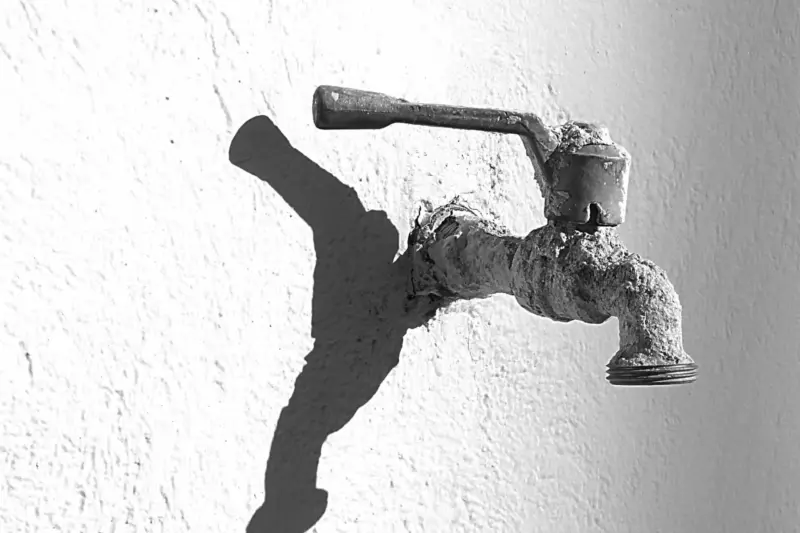
🧰 The Problem:
Buildup throughout the water supply commonly causes low hot and cold water pressure.
Sediment or mineral buildup happens in pipes or water tanks when hard water deposits minerals or sediments over time.
Sediment and mineral deposits build up and damage plumbing lines by creating blockages or corroding metal.
When this damage reaches cold water supply lines, it compromises water flow into a home or business.
If the hot water supply lines contain damage, it makes the hot water pressure low.
✅ The Fix:
Minerals and sediment build up in your hot water pipes or water supply lines, leading to a more severe issue.
If you suspect your tankless hot water system is clogged due to hard water or sediment deposits, and you’re a bit of a DIYer, check out our article on Tankless Water Heater Maintenance.
Or, if you are uncomfortable carrying out maintenance, call a qualified expert to inspect, flush, or replace your water heater or pipes and restore hot water flow.
Related Reading: The Mystery of Yellow Water: Is it Safe to Drink or Bathe In?
🛠️ Worn Shower Head, Taps, and Other Fixtures
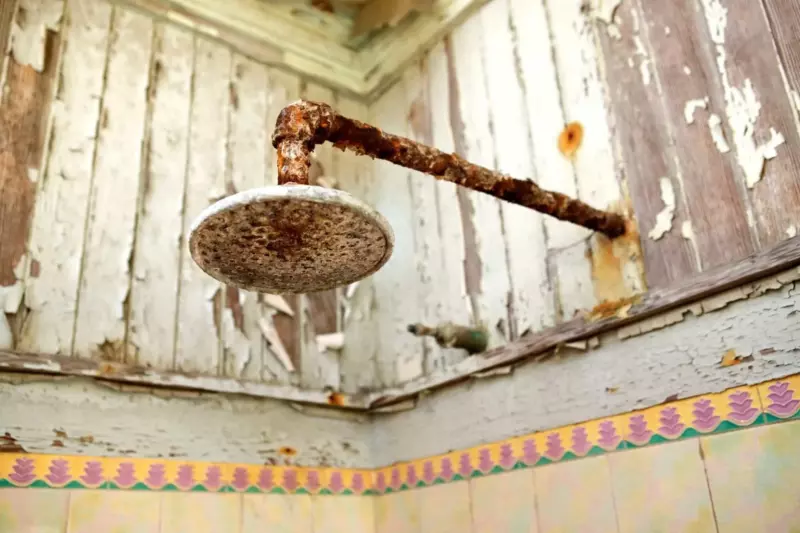
🧰 The Problem:
Though less common, one potential cause of low water pressure remains worn shower heads, taps, or other sink fixtures.
Over time, seals and gaskets like those found in a showerhead or shutoff valve wear down.
These parts often consist of plastic or rubber, which becomes brittle and breaks with age.
This breakage can lead to low water pressure in isolated rooms.
✅ The Fix:
If you isolate your low hot water pressure to a single room, inspect all showerheads and hot tap for signs of damage or sediment buildup.
Replace any damaged or broken fixtures.
Severe damage to a showerhead or tap likely indicates an underlying plumbing issue.
Professional plumbers identify warning signs and prevent minor water pressure problems from becoming larger ones.
🛠️ Damaged or Leaking Pipes

🧰 The Problem:
Over time, even steel pipes can become bent, cracked, or completely broken due to wear or damage.
Sometimes, this damage occurs without notice and results in a water pressure loss in one or more locations in a home or business.
Pipes containing a break, even one as small as a square inch, require an immediate, real solution.
Check your water meter valve to determine if your water pressure problems stem from a water leak.
✅ The Fix:
If possible, turn off the water main using a shut off valve immediately for leaking or corroded pipes.
Call your water company or a trusted plumbing services provider to safely operate your shut off valve and turn off the main water supply line to the entire house or business.
🛑 PRO TIP: A leaking or damaged pipe is a serious issue, but you can get a quick repair by a trained plumbing professional. Don’t risk your house or business.
If you suspect that a leaking or broken pipe caused the lower water pressure, call a professional right away.
The only real solution is for a professional to replace corroded or metal pipes with reliable plastic pipes.
🛠️ Clogged Water Filter
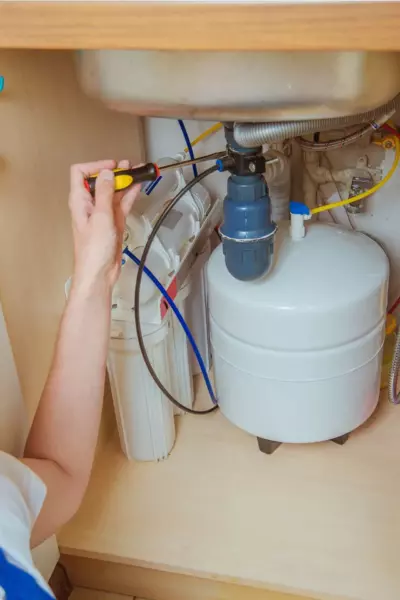
🧰 The Problem:
A standard component of quality plumbing work includes functioning water filters.
Debris or sediment deposits build up and clog water intake filters over time.
When water filters become clogged, water pressure drops in every location in a house or business.
✅ The Fix:
Water filters typically connect to main water intake lines on water heaters or cold water lines.
If you suspect your water filters are clogged due to sediment buildup, replace the filters for a cost-effective fix.
Begin by using the shutoff valve for the main water line. Be sure the water line is clear before beginning replacement. Clogged water filters indicate an underlying plumbing problem.
Routine inspections and maintenance from qualified plumbing professionals reduce the buildup of sediment.
Little or no buildup of debris helps ensure that all parts of your commercial or residential plumbing system operate safely and effectively.
🛠️ Faulty Water Heater Component
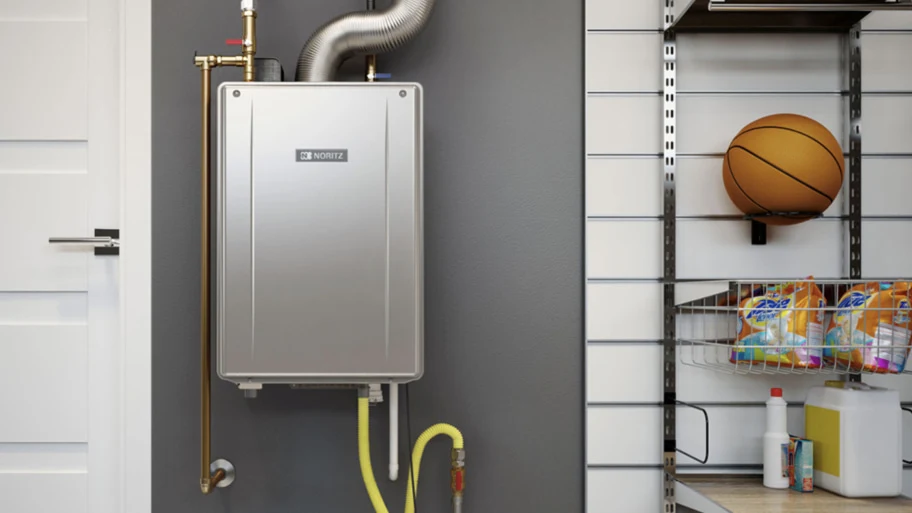
🧰 The Problem:
Today’s water heaters run efficiently and reliably, thanks to the innovations of tireless engineers.
However, occasionally a component such as a faulty pressure regulator, stuck ball valve, or not fully open hot water valve will cause problems.
Sometimes these component failures can lead to low hot water pressure throughout a home or business.
✅ The Fix:
Consider a hot water heater as a complex machine that plumbers train to install, maintain, or repair.
Before repairing or troubleshooting a water heater component such as a pressure regulator or pressure gauge, our Phyxter experts recommend turning off the power to your water heater.
Next, shut off the water to your hot water system using the shutoff valve.
Doing this prevents any further damage to your hot water tank or its surroundings.
The next step is to phone a trusted plumbing provider in your service area.
Your professional plumber will inspect your hot water systems for any issues or faulty parts.
⭐ Find the Right Solution to Low Hot Water Pressure

Low hot water pressure can be a frustrating problem, but it is often easily fixed with a few quick and simple solutions.
You can often improve your hot water pressure without needing a professional plumber by checking for common issues such as damaged pipes or faulty fixtures.
If none of these solutions work, it may be time to call in a professional to diagnose and fix the issue.
By following these tips, you can ensure that your hot water pressure is back to normal and enjoy a comfortable and convenient shower experience.
Want to learn more about your home’s plumbing system? Feel free to check out our other plumbing articles!
Related Reading: DIY Guide to 15 Common Plumbing Problems & Solutions and How Long Does It Take for a Water Heater to Heat Up?

